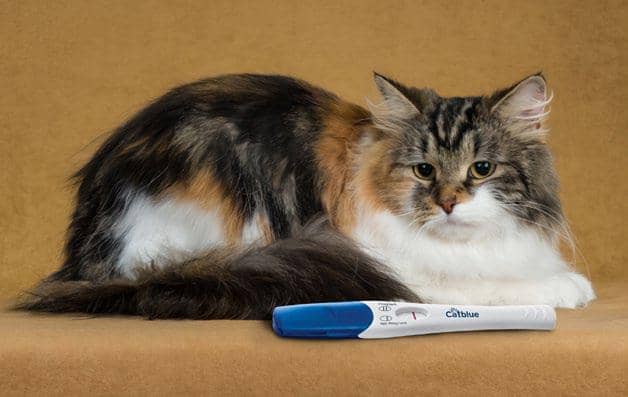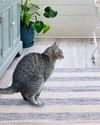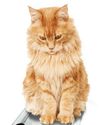
The feline reproductive system appears designed by Mother Nature to maximize output, with heat cycles that can begin as early as four or five months, ovulation occurring in response to the stimulation of a breeding, etc., etc. It all should result in an abundance of kittens and generally does.
Except when it doesn't.
So where do you start when it comes to figuring out why the queen you expected to be pinking up has started to call again? Is it more likely to be the girl's fault or the boy's fault? Is there some abnormality, deficiency, or infection on either side-that is preventing a successful combination of sperm and egg? According to Cat Talk's Veterinary Consultant, Dr. Noelle Giddings, infertility can affect as many as 15% of breeding cats, and the figure may be even higher in certain breeds. So, if you have had a pregnancy fail with your particular pair more than once, you probably want to involve a theriogenologist, i.e., a veterinarian who specializes in animal reproduction. However, here are some things to consider before you begin that process.
First, "Check the Connection"
With any faulty piece of technological equipment, the first thing to check is the wiring and plug. A mis-breeding follows the same principle. Emilie, a veterinary student with a special interest in theriogenology, would first ask if you actually observed the breeding. Are you positive that the male did, in fact, grab and mount the female, and position her properly (which generally requires mutual cooperation)? Did the queen let out that unmistakable yowl, roll and lick herself frantically, and tell the tom to get out of her hair?
هذه القصة مأخوذة من طبعة February 2023 من Cat Talk.
ابدأ النسخة التجريبية المجانية من Magzter GOLD لمدة 7 أيام للوصول إلى آلاف القصص المتميزة المنسقة وأكثر من 9,000 مجلة وصحيفة.
بالفعل مشترك ? تسجيل الدخول
هذه القصة مأخوذة من طبعة February 2023 من Cat Talk.
ابدأ النسخة التجريبية المجانية من Magzter GOLD لمدة 7 أيام للوصول إلى آلاف القصص المتميزة المنسقة وأكثر من 9,000 مجلة وصحيفة.
بالفعل مشترك? تسجيل الدخول

Life With Patrick
Patrick and Mount Doom

Feline Photographers Part 1
\"Cats never strike a pose that isn't photogenic.\" - Lillian Jackson Braun

The Cat Fancy Alphabet
\"The Cat Fancy Alphabet\" is a new feature in Cat Talk. It highlights various terms and aspects of the cat fancy, educating fanciers new and old about our hobby.

UP CLOSE AND Purr-sonal
If there is one person, or even just a name, that anyone in CFA (Cat Fancier Association) knows, it would have to be Allene Tartaglia. It might be from her involvement with most aspects of the operations of CFA in her position of executive director. Or perhaps from her deep involvement with both the CFA Annual meeting and/or the International Show. Cat Talk thought it was time to learn more about one of the most key people in CFA.

Vision and Hearing Dysfunctions in Senior Cats
Just as people are challenged by having deficiencies with vision and hearing over time, so are senior cats. In senior cats, pet owners may notice their cats are no longer responding to them in the same way; however, it may be difficult to figure out.

Senior Cats and House Soiling
Why is my cat no longer using its litter box? Cat soiling in the house is one of the most talked about issues for pet owners.

Nutrition for Our Senior Cats
From the time they are born, our kittens receive a tremendous amount of care, with diet being at the core of their growth and development.

Fluffy's Sixteen and STILL Plays Like a Kitten!
Enrichment for Senior Cats

Alternative Arthritis Treatments for Cats
Just like humans, cats can experience arthritis. About 90% of cats over the age of 10 years experience osteoarthritis (OA) in at least one joint.1 It is a complex condition involving inflammation and degeneration of one or more joints and is sometimes referred to as degenerative joint disease (DJD). Cats with OA experience pain and inflammation in various joints that interfere with daily activities.

Checklist For What to Look For in Your Club's Next Show Venue
Show Manager To Ring One, Please